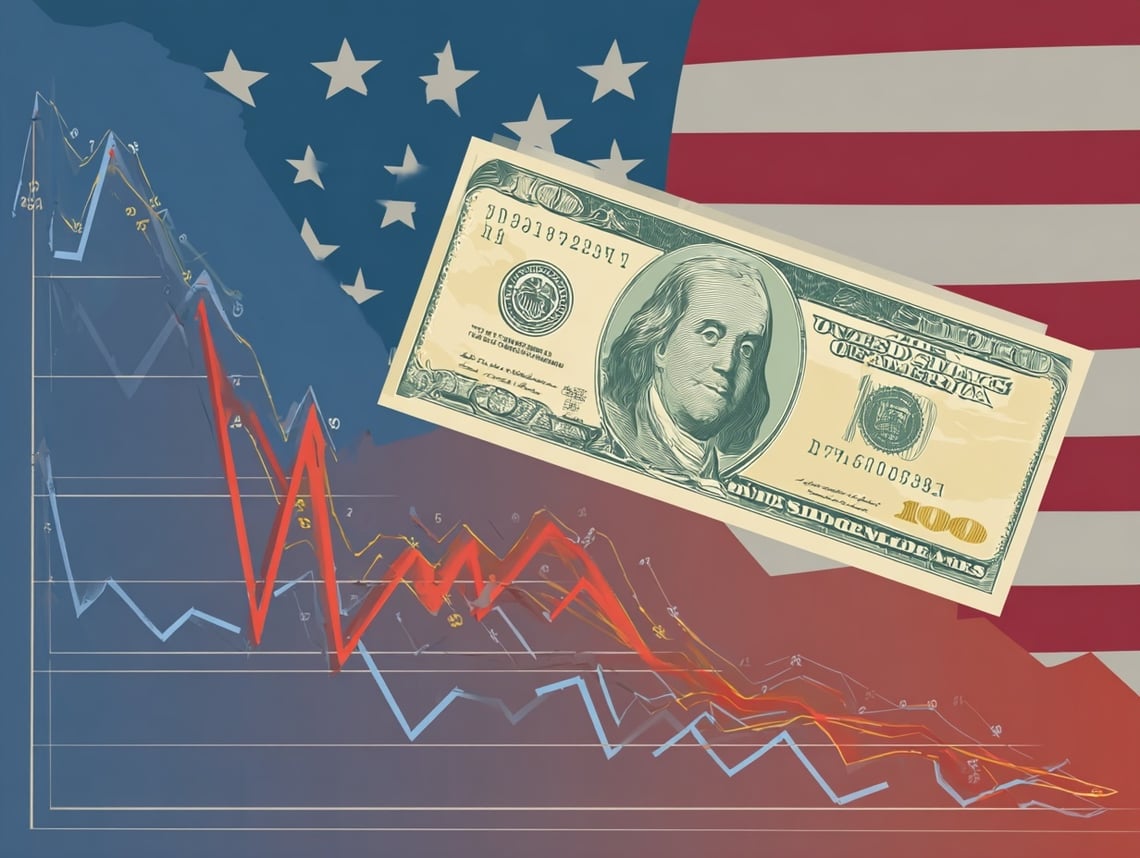
What Is a Treasury Yield?
A Treasury yield is the return you earn for lending money to the U.S. government. When you hear someone say the “10-year Treasury yield is at 4.3%,” they mean the government is offering a 4.3% return, annually, to anyone who buys a 10-year U.S. Treasury bond.
Think of it like this: The government needs money. You (or a company or foreign country) lend them that money by buying a bond. In return, the government agrees to pay you back—with interest. That interest, spread out over time, is the yield.
Why Does the Government Borrow Money?
When the U.S. spends more money than it collects in taxes, it borrows to cover the gap. This borrowed money funds a wide range of things: Social Security, defense, infrastructure, education, disaster relief, healthcare programs, and more.
The U.S. Treasury Department issues bonds, notes, and bills to raise this money. The yield offered is a kind of price: the higher the yield, the more attractive the deal for investors—but it also signals that the government must pay more to borrow.
Who Buys U.S. Bonds?
Lots of different people and institutions:
- Everyday Americans: Through savings bonds, retirement accounts, or bond mutual funds.
- Large institutions: Banks, pension funds, insurance companies.
- Foreign governments: Countries like Japan and China buy U.S. Treasuries to store their surplus dollars in a safe place.
Buying a U.S. bond is seen as one of the safest investments in the world—because the U.S. government has never defaulted on its debt.
How Is the Treasury Yield Set?
The yield is influenced by supply and demand. If lots of people want to buy bonds, prices rise—and yields fall. If fewer people want them, prices drop—and yields go up. The Federal Reserve also influences yields by setting short-term interest rates and buying or selling bonds in the open market.
What Does a High or Low Treasury Yield Mean?
High yields (e.g. 5% or above) usually mean investors want a bigger return—either because they expect inflation or because they think lending money to the U.S. is riskier.
Low yields (e.g. below 2%) often mean investors are nervous. When people expect a recession, they rush to buy safe investments like U.S. bonds. That drives prices up and yields down.
In general:
- Rising yields → Investors expect stronger growth or higher inflation
- Falling yields → Investors expect economic slowdown or lower inflation
Why Do Treasury Yields Matter for the Economy?
Because yields shape the cost of borrowing for almost everyone. Treasury yields are like the anchor point for all other interest rates in the economy.
Here’s how it trickles down:
- Mortgages: 10-year Treasury yields help set 30-year fixed mortgage rates.
- Credit cards and auto loans: These rates are tied to short-term Treasury yields.
- Savings accounts: Banks use yields to determine what they’ll pay depositors.
- Stock prices: When yields rise, stocks often fall because investors can earn more from “safe” bonds.
How Treasury Yields Reflect the Health of the Economy
Yields are a kind of economic weather vane. They change daily, and their movement signals how people feel about growth, inflation, and risk.
- When yields rise steadily, it can mean the economy is strong—but inflation might be coming.
- When yields fall fast, it can mean investors are bracing for a recession or a stock market drop.
- When short-term yields are higher than long-term yields (a “yield curve inversion”), it has often predicted recessions.
Today’s Treasury Yield Snapshot (June 24, 2025)
As of today:
- 10-year yield: ~4.34%
- 2-year yield: ~3.90%
- 30-year yield: ~4.89%
The Federal Reserve has paused rate hikes and may cut later this year if inflation continues to cool. Yields have dipped slightly in response—but remain high compared to the past decade.
What It Means for You
Understanding Treasury yields helps you make smarter decisions about:
- When to buy or refinance a home
- How to save or invest your money
- How inflation and borrowing costs may affect your daily life
If yields rise, you might earn more on savings—but pay more to borrow. If yields fall, borrowing gets cheaper—but your savings may earn less.
Key Takeaways
- Treasury yields are what the U.S. pays to borrow money from investors.
- Those investors include individuals, banks, and foreign countries.
- Yields are shaped by investor demand, inflation expectations, and Fed policy.
- Changes in yields affect mortgages, credit cards, savings rates, and more.
- Tracking Treasury yields helps you understand where the economy—and your money—might be headed.
Conclusion
Treasury yields aren’t just for Wall Street. They’re a vital signal for how the economy is doing—and how it affects your finances. Whether you’re buying a home, planning your savings, or just trying to make sense of the news, paying attention to yields can help you navigate an uncertain financial world with more confidence.
%20512x512%20google%20store%20app%20logo%20SEPT%2024%2c%202025%20(4)-png.png?width=51&height=51&name=USE!!%20)%20512x512%20google%20store%20app%20logo%20SEPT%2024%2c%202025%20(4)-png.png)



